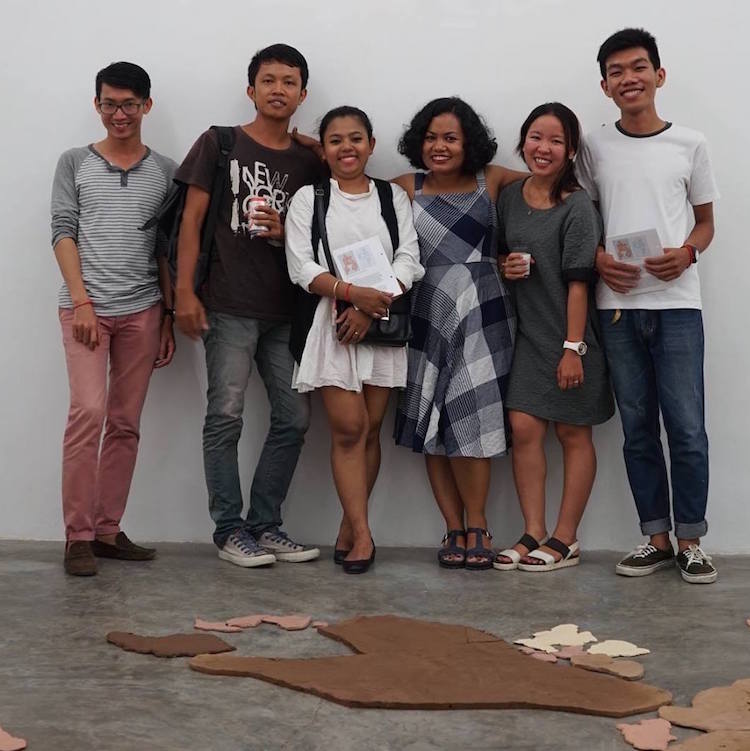PHNOM PENH, Cambodia — When you were a child did you ever cross a state or country border and wonder why you couldn’t see the line? It’s the first clue many people get that there’s something fishy going on with maps. Few people know that like the residents of Cambodia, where their land is constantly being re-parceled and re-demarcated from interests as varied as colonialists to coups to government planners to good ol’ fashioned money and power land grabs.
Artist and activist Eng Rithchandaneth (who also goes by Daneth) in Poetic Topographies at SA SA BASSAC confronts the arbitrary nature of mapmaking and in doing so raises troubling questions about the people living within those constantly-shifting borders and property lines. She should know better than most. In a country where the urban poor, farmers and indigenous groups all face this reality, her family could lose their own property to a road expansion project.
She might as well make her own map. Using raw clay as a metaphor for the earth, she created a puzzle-like map and set it on the show floor. In addition to being randomly arranged, the clay fell apart over the course of the exhibition until the finished map barely resembled the land it originally described. Ben Valentine, in his article for HyperAllergic quoted the exhibition curator:
In a country where clear and legally accepted maps are also direly needed, why is it important to consider the poetic maps of artists? “Political and legal maps can give protection, but they also set boundaries, they force us to conform and fit in, they include but also exclude,” (exhibition curator Vuth) Lyno told me over email. “This is the same for a process of setting standards and norms, for example on gender. Daneth and Dara’s works remind us about these issues, while also allowing us to imagine other ways of mapping that we can associate with, not limited to physical space, but also emotions and memories.”
If something as meticulously-drawn as a map could be bogus, how about the foggier notions of sexual identity? Kong Dara uses the map-making theme to draw his experiences with the gay and queer communities in Cambodia, Thailand and Vietnam. According to the curators he “destabilize(s) norms of standardized maps with counter-grown, sprouting, organic encounters” that often get their power through lived intimate experiences. From Valentine:
This notion of the violence of demarcation can be very detrimental especially in relationship to gender identity, particularly in more conservative countries like Cambodia. So, Dara’s Journey Line (2016), a series of poetic mappings of queer communities in Thailand, Vietnam, and Cambodia, are intended as rebuttals to our desire to define and demarcate. In Dara’s new and queer — in every sense of the word — maps, segments of real-world borders and waterways blend into a soup of line-drawings.
Bill Rodgers is the Managing Editor of cfile.daily.
Do you love or loathe this contemporary ceramic art? Let us know in the comments.









Add your valued opinion to this post.